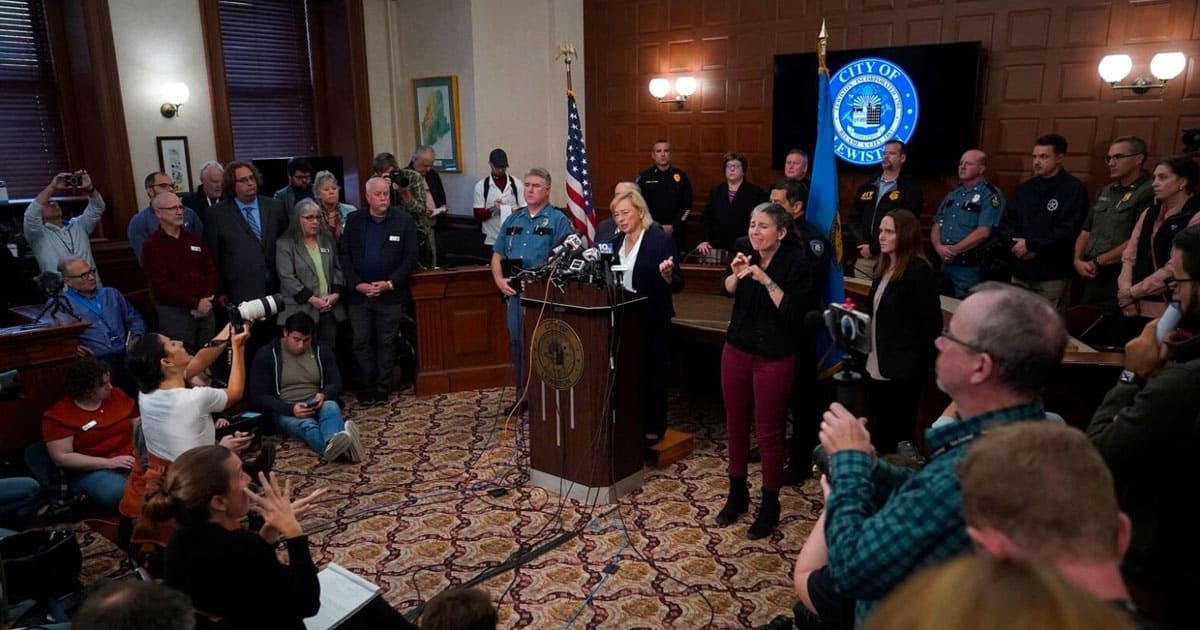
As anti-gun zealots march in lockstep proclaiming that the gun is the problem, authorities received clear signals that the Maine shooter was a ticking time bomb. The National Guard reservist who killed 18 people is yet another cautionary tale for what should have been done.
The man engaged in a pair of shooting attacks on Oct. 25. The victims were shot at Just-In-Time Recreation and at Schemengees Bar & Grille. The suspect then disappeared for 48 hours as local residents sheltered in place and the massive manhunt ensued.
He was found two days later about 10 miles away dead from an apparently self-inflicted gunshot wound.
Robert Card of Lewiston, Maine, was committed to an Army hospital last summer over threats he issued to go on a shooting spree at his National Guard base. Witnesses also cited a pattern of disturbing behavior.
Now an explosive new report from CNN revealed that the Maine National Guard was so concerned about Card’s erratic behavior that they reported his actions to local law enforcement.
The expressed worry came from a soldier who told authorities that they were afraid Card would “snap and commit a mass shooting.”
Sept. 16 was less than six weeks before the obviously deranged man carried out the horrific massacre at the bowling alley and bar. On that day, the outlet reported that officers from the Sagadahoc County and Kennebec County Sheriff’s Offices reacted to the report from the National Guard.
A spokesman for the Army told CNN that the unit Card was assigned to asked for a health and welfare check.
Lt. Col Ruth Castro shared the military’s concerns.
“In September, the Sagadahoc County Sheriff’s Office responded to a health and welfare check requested by Sgt. 1st Class Robert Card’s unit out of an abundance of caution after the unit became concerned for his safety. The Army takes all allegations seriously. Due to an ongoing Army investigation, we cannot go into any further details.”
The CNN report revealed that the responding Sagadahoc County sergeant requested backup and then unsuccessfully tried to talk to Card. Alarming details were received from the shooter’s family and the military.
The deputy was warned that “when [he] answers the door at his trailer, in the past he usually does so with a handgun in hand out of view from the person outside.”
But no contact was made, and that appears to be as far as the inquiry went.
Maine has a “yellow flag” law that authorities may utilize to review a person with access to weapons who may be a danger to themselves or others. By law, the initial step in the process is to have law enforcement take the person into custody for evaluation by a medical professional. The statute stipulates that after the medical diagnosis, the judge may approve an order to temporarily seize weapons from the individual.
CNN reported that a File 6 missing persons report apparently was submitted by the sergeant who attempted to contact Card. There was no immediate indication, however, that formal action pertaining to his access to firearms was ever enacted.
The case was reportedly closed on Oct. 1, just 24 days before the mass shooting spree.
These “yellow flag” and “red flag” laws that are sprinkled across the nation are replete with issues for Second Amendment advocates. Most require the flimsiest evidence and have few if any provisions to protect due process rights.
That being said, there are certainly instances when individuals and their weapons should be separated for their wellbeing and the safety of others. The Maine shooting quite obviously did not just appear out of a vacuum — there were clear warning signs and authorities were duly notified.
Determining where the system failed yet again and correcting the missteps is far more important than the rush to blame an inanimate object for a person’s deranged acts. There was ample warning, so why was the suspect free to conduct his rampage? That’s the question needing answers.
